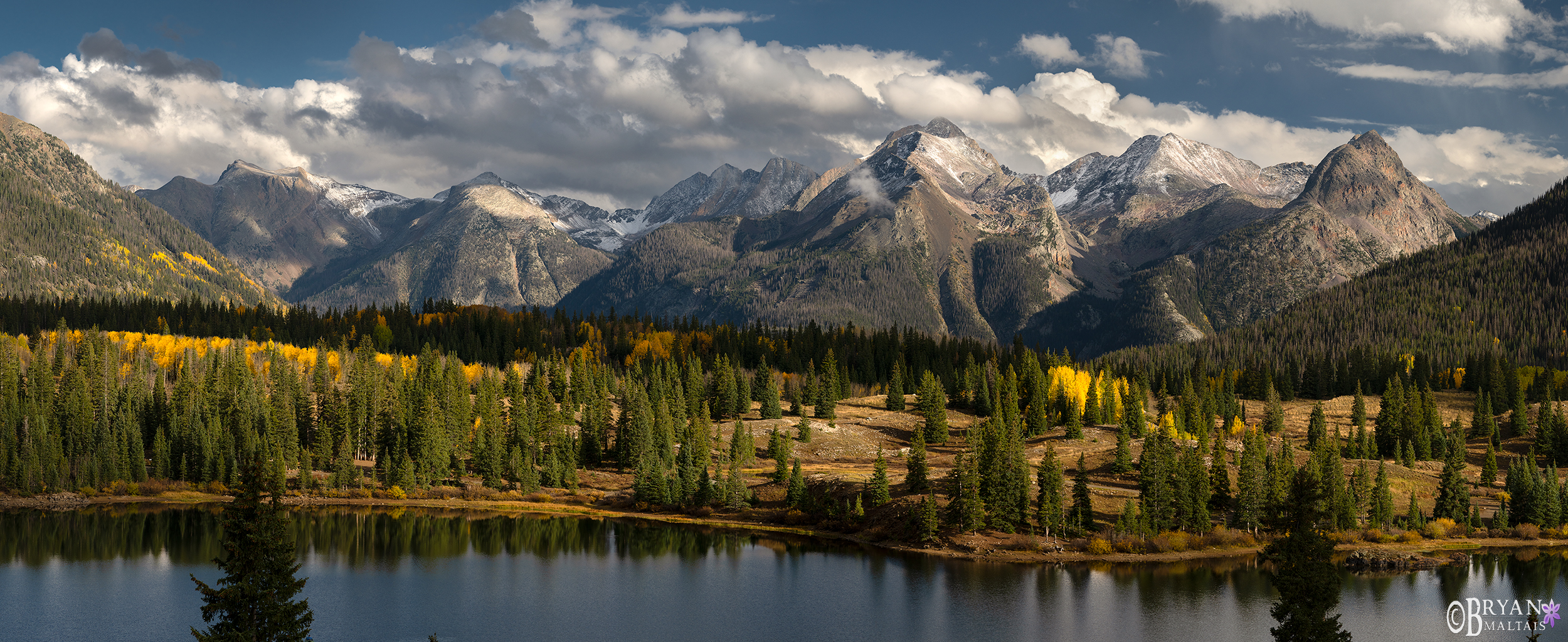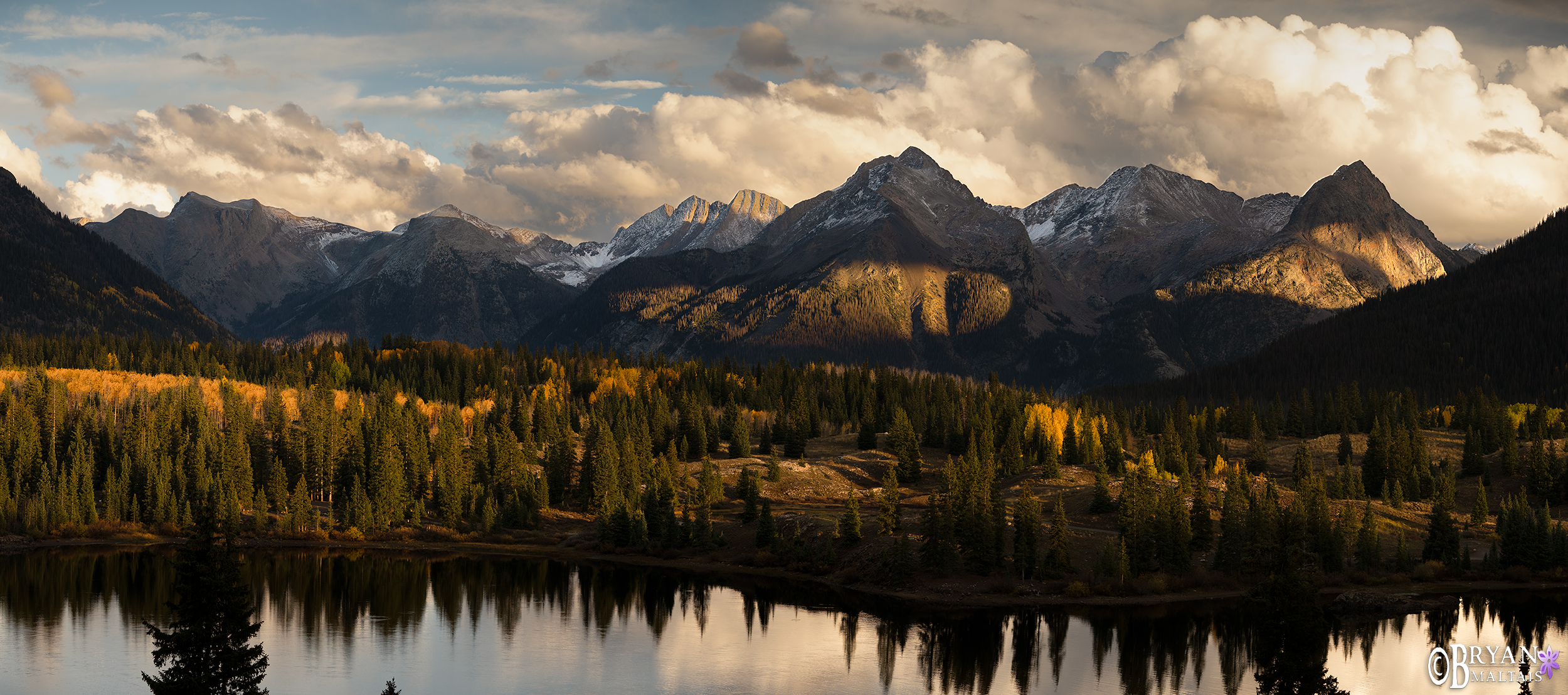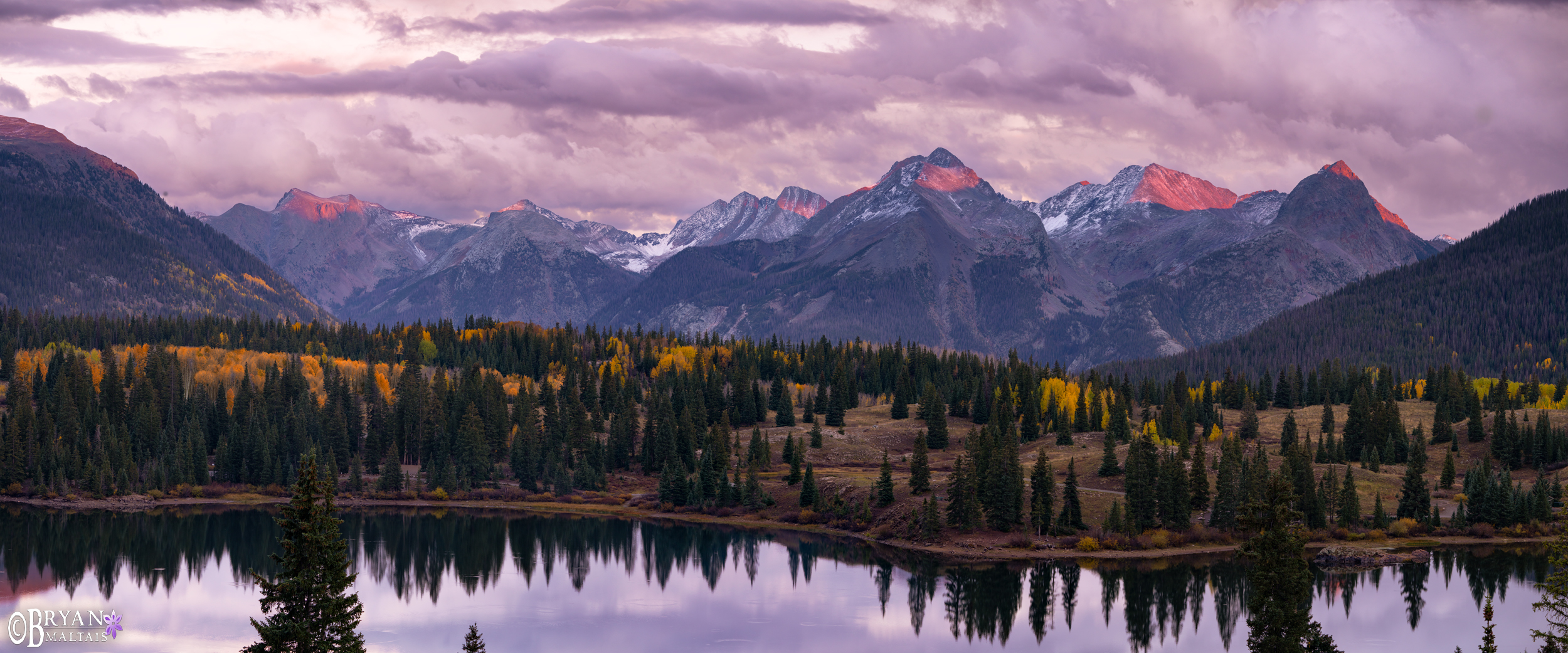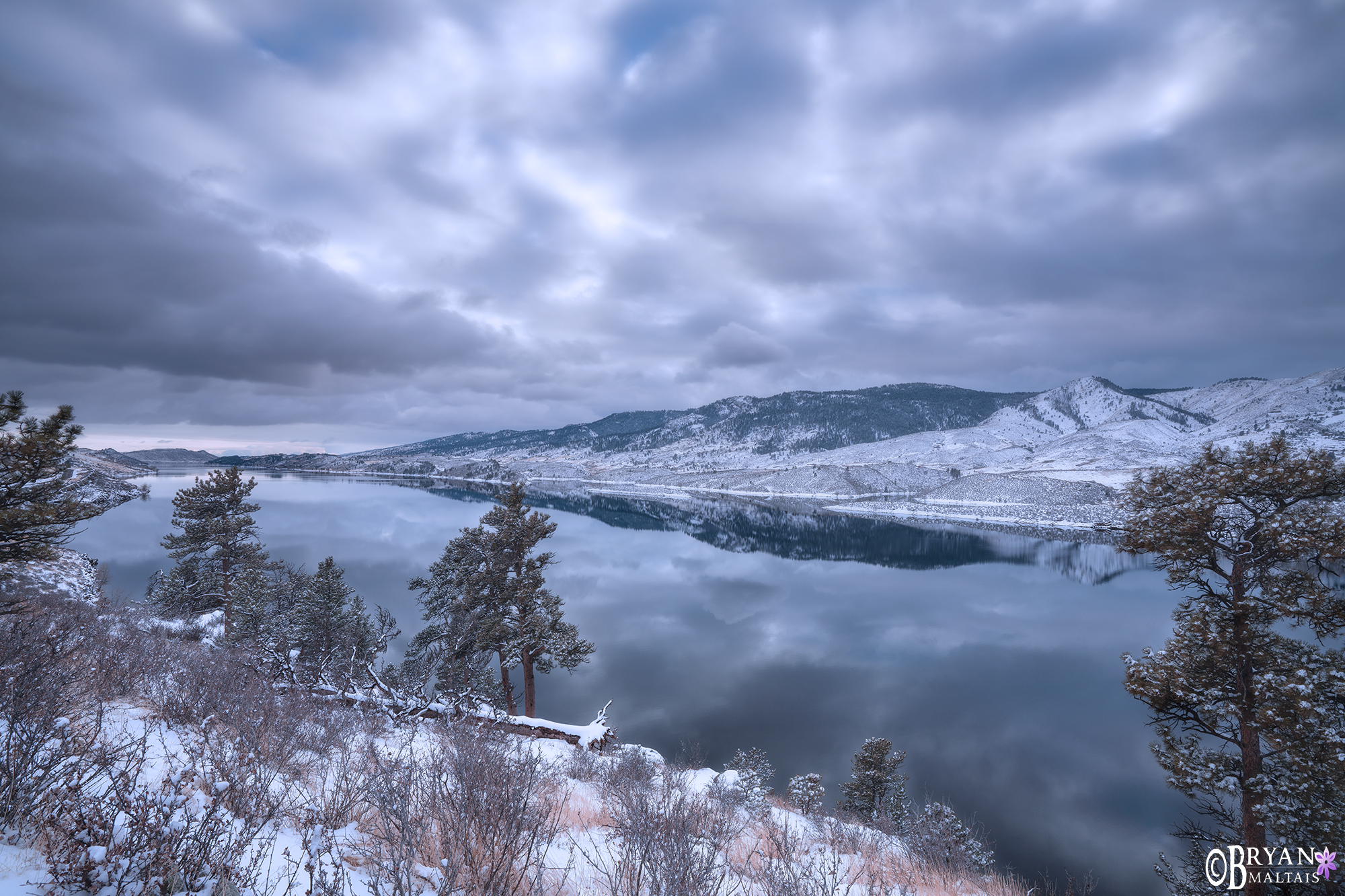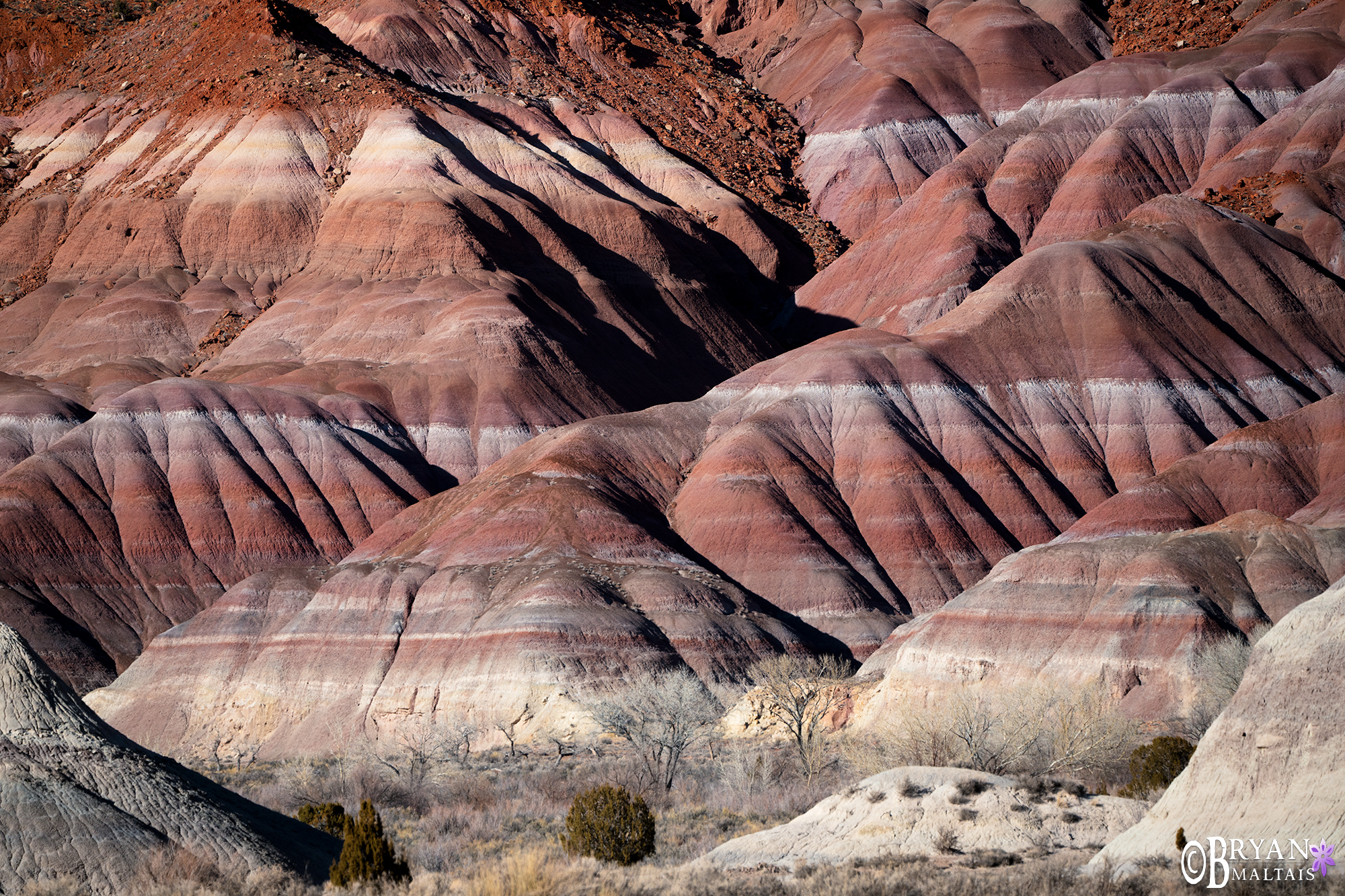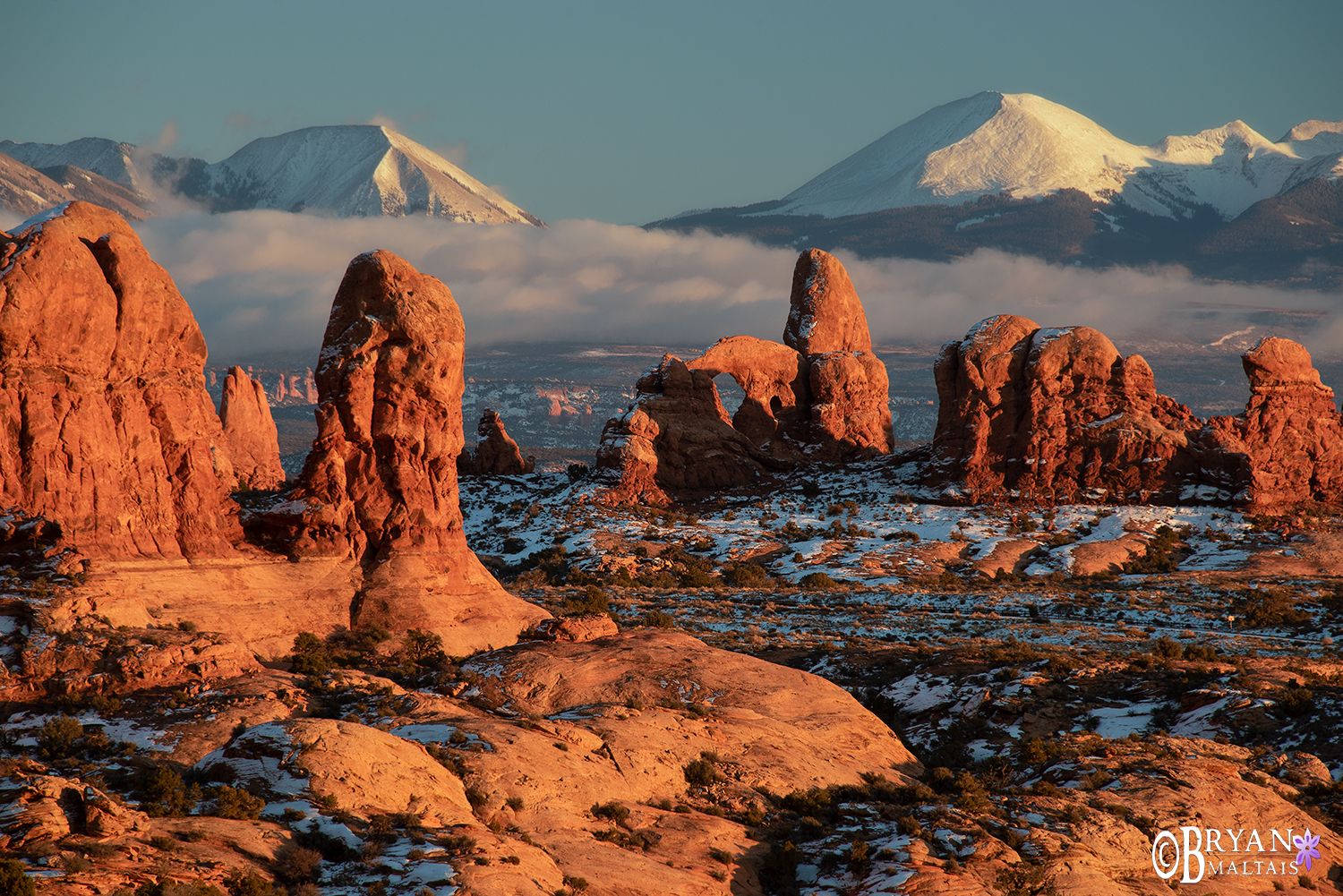
Why is Light important in Landscape Photography?
Landscape photography would be much easier if all scenes looked equally good under any light.
Think of it like this; an extraordinary landscape is a canvas for spectacular light. Without beautiful light, even an extraordinary landscape makes for just an ordinary photo. Good light is more important than the landscape itself. A plain landscape with great light makes a better photo than an amazing landscape with boring light.
Capturing good light is usually a long process rather than in an instant capture. When I shoot sunset, for example, it’s a 2-4 hour event that begins with capturing late afternoon light, then golden hour, then sunset, and finally, afterglow. You must be present for the entire transition because you can’t predict when the evening’s best moment of light will occur. This moment depends on the interplay between the sunlight and clouds.
Each different type of light imparts such dramatic mood changes that it’s almost like photographing different places. Golden hour bathes the landscape in warm light with long shadows that reveal hidden textures. At the actual moment of sunset, a thin band of amber light glows on the peaks while the foreground is cloaked in shadow. Moments later, the entire landscape becomes dark while the clouds ignite into a crimson inferno from remnant sun rays being cast beneath the horizon. Being present through each phase of light gives you a batch of images from which to select the best ones.
These 3 images of Colorado’s Grenadier Mountains represent a 3 hour process of capturing different types of light from late afternoon, golden hour and alpenglow.
What counts as “good” light? It may be saturated with warm hues around dusk and dawn. Clouds are often the harbinger of good light. They intermingle with light to create effects like dithering, crepuscular rays, and dramatic shadows. Good light also comes when the sun is at a low angle to create shadows on the landscape that reveal texture and depth. Let’s look at the different types of light.
Golden Hour Light
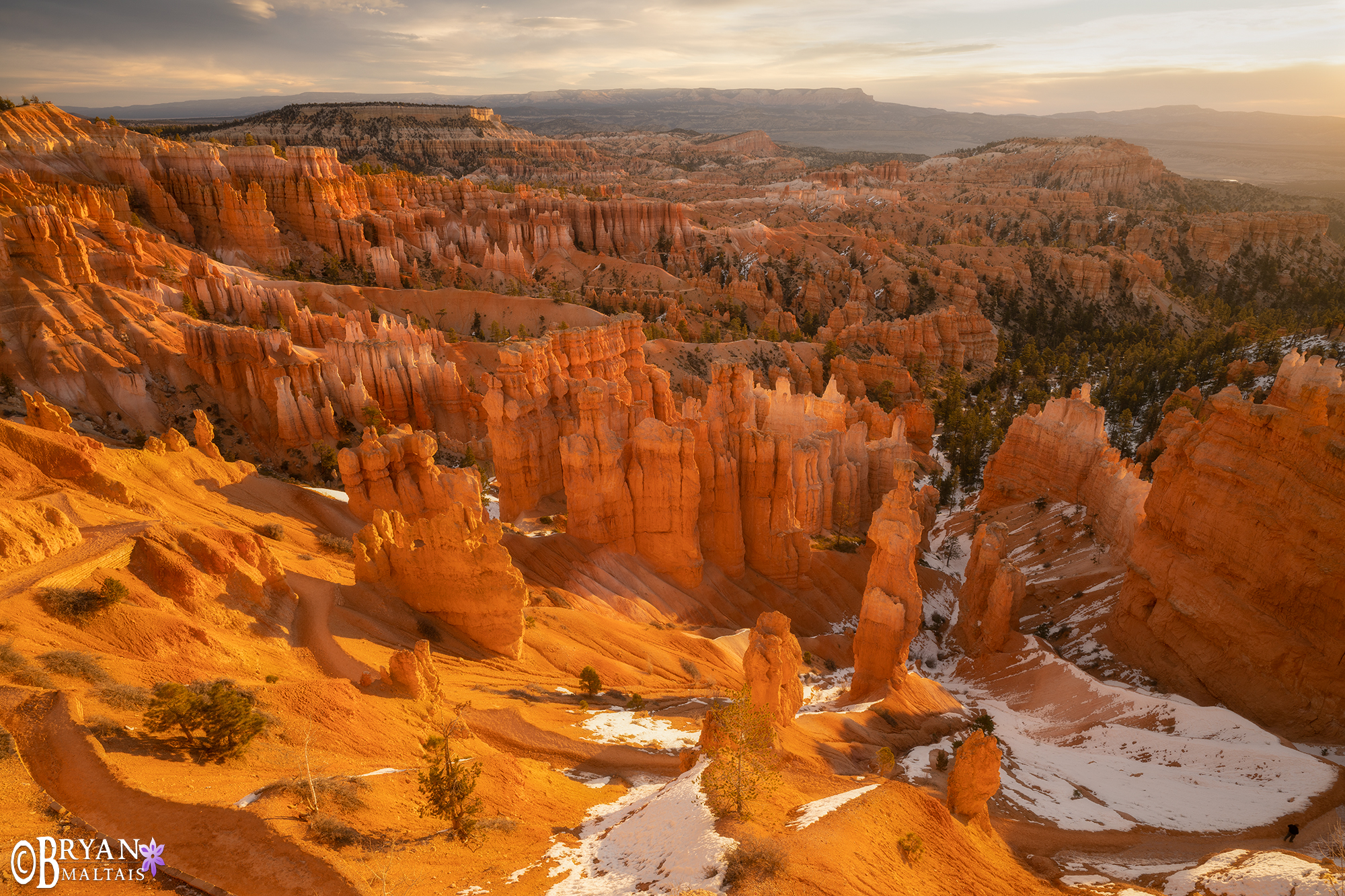 Golden hour is the roughly 1-hour period after sunrise and before sunset when the light has a warm tone. It happens because the sun is low on the horizon where its light must pass through a long horizontal distance of the atmosphere. This filters out the blue wavelength, leaving warm hues. The closer the sun is to the horizon, the warmer the light becomes. From afternoon to sunset, light seamlessly transitions through white, yellow, golden, and then amber hues in its final moments.
Golden hour is the roughly 1-hour period after sunrise and before sunset when the light has a warm tone. It happens because the sun is low on the horizon where its light must pass through a long horizontal distance of the atmosphere. This filters out the blue wavelength, leaving warm hues. The closer the sun is to the horizon, the warmer the light becomes. From afternoon to sunset, light seamlessly transitions through white, yellow, golden, and then amber hues in its final moments.
During this time, golden light oozes over the landscape like honey, which has the power to make an otherwise unremarkable scene, sublime. It’s one of the best types of light to reveal depth and structure because the sun is low, and shines horizontally instead of directly down. This creates shadows in landscape features like cracks, valleys, spurs and draws that normally blend into the landscape.
While capturing golden hour may require rising early and hiking in the dark, devoting the extra effort can distinguish lackluster photos taken at midday from warm masterpieces.
Alpenglow
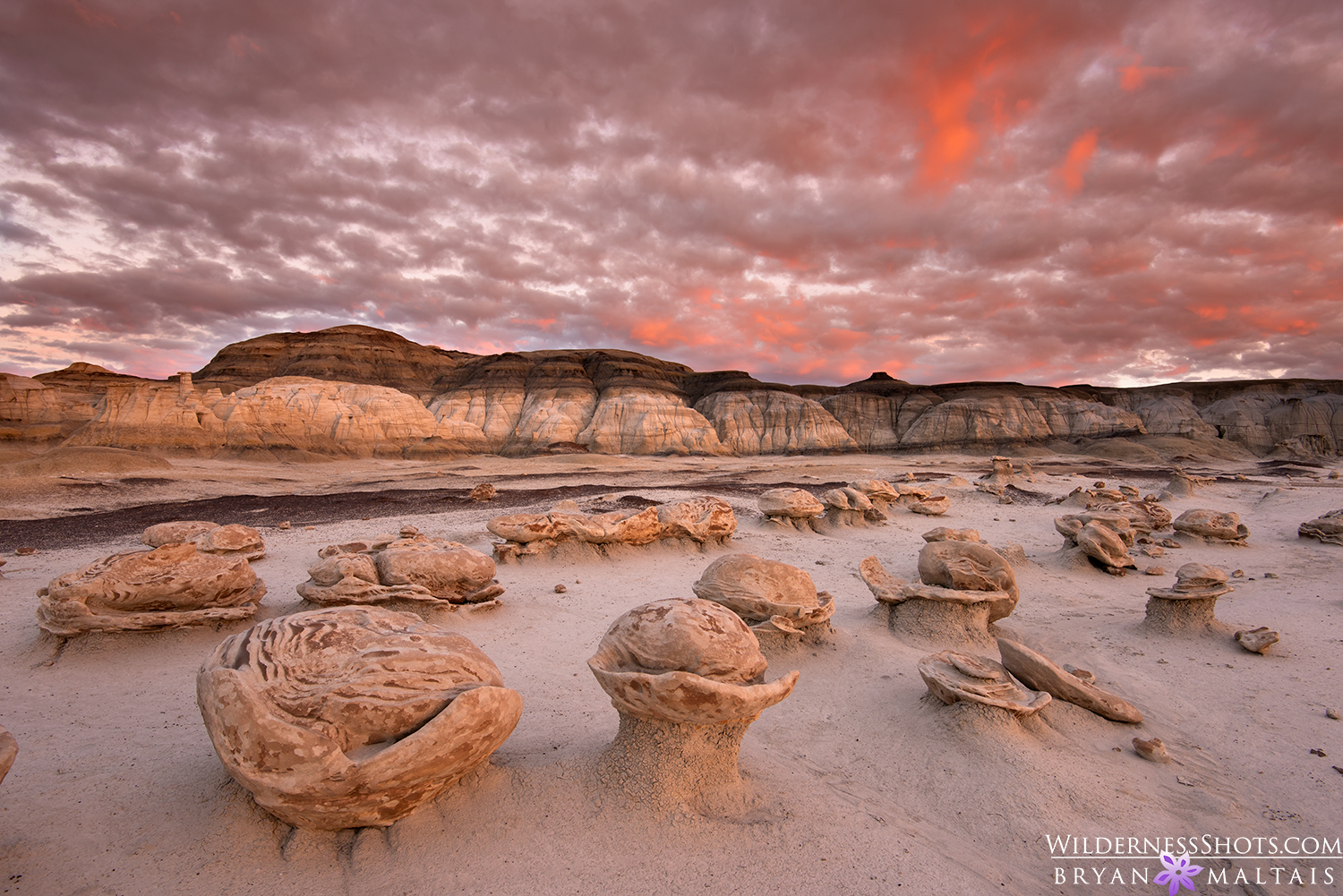 Alpenglow is responsible for fiery skies when the clouds glow shades of orange, pink or red. It occurs when the sun is well below the horizon, but its light shines into the upper atmosphere and hits clouds or atmospheric particles. At this low angle, the light filters through such a long horizontal distance of the atmosphere that only the red wavelength remains. Before and after sunset it’s also called preglow and afterglow, respectively.
Alpenglow is responsible for fiery skies when the clouds glow shades of orange, pink or red. It occurs when the sun is well below the horizon, but its light shines into the upper atmosphere and hits clouds or atmospheric particles. At this low angle, the light filters through such a long horizontal distance of the atmosphere that only the red wavelength remains. Before and after sunset it’s also called preglow and afterglow, respectively.
Alpenglow is a coveted effect that only happens when conditions are right. Clouds or particles must be present to catch the light, but not block the sun’s rays at the horizon. Fiery sunsets are memorable because they’re seldom. Often, there are too many clouds that block the horizon or too few to catch the color. The higher the clouds in the atmosphere, the longer they can catch light as the sun sinks lower. High clouds may still linger orange nearly until dark.
As clouds move around, alpenglow colors can temporarily disappear, then resurrect. Thinking the show is over, photographers can be fooled into packing up, only to miss the grand finale.
In desert regions, dust particles suspended high in the atmosphere act to filter out the blue wavelengths, and can intensify the saturation of alpenglow. This extra degree of filtration can remove enough blue light that alpenglow can occur while the sun is still up. This is why Arizona sunsets are famed.
Alpenglow gets its name because the low-angle sun makes high peaks glow after sunset just as it does clouds.
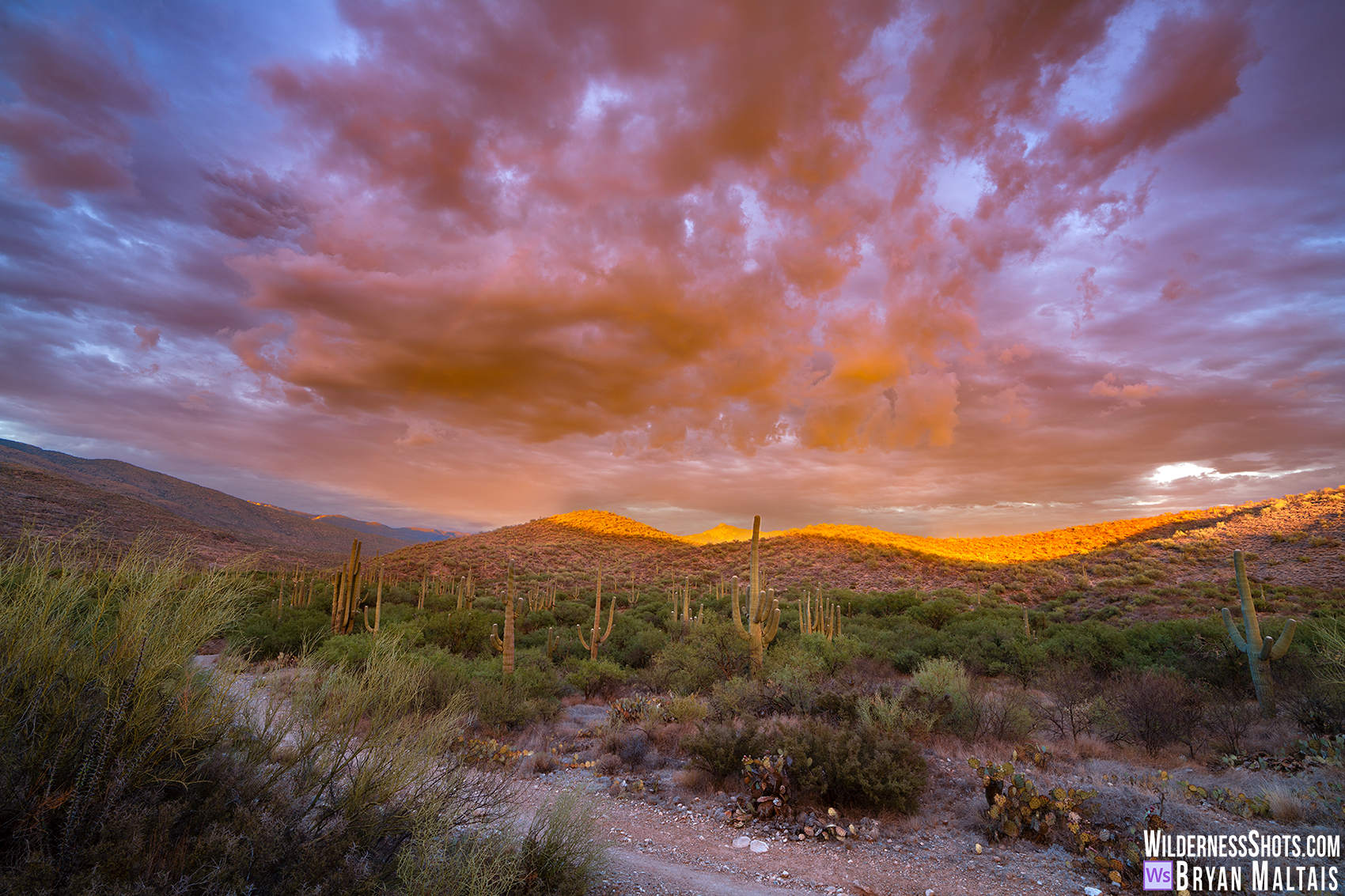 Normally, alpenglow begins a short while after sunset. In desert regions like the Arizona’s Sonora Desert, alpenglow can occur before the sun has fully set. Tucson, AZ
Normally, alpenglow begins a short while after sunset. In desert regions like the Arizona’s Sonora Desert, alpenglow can occur before the sun has fully set. Tucson, AZ
Mid-day or Direct Overhead Light
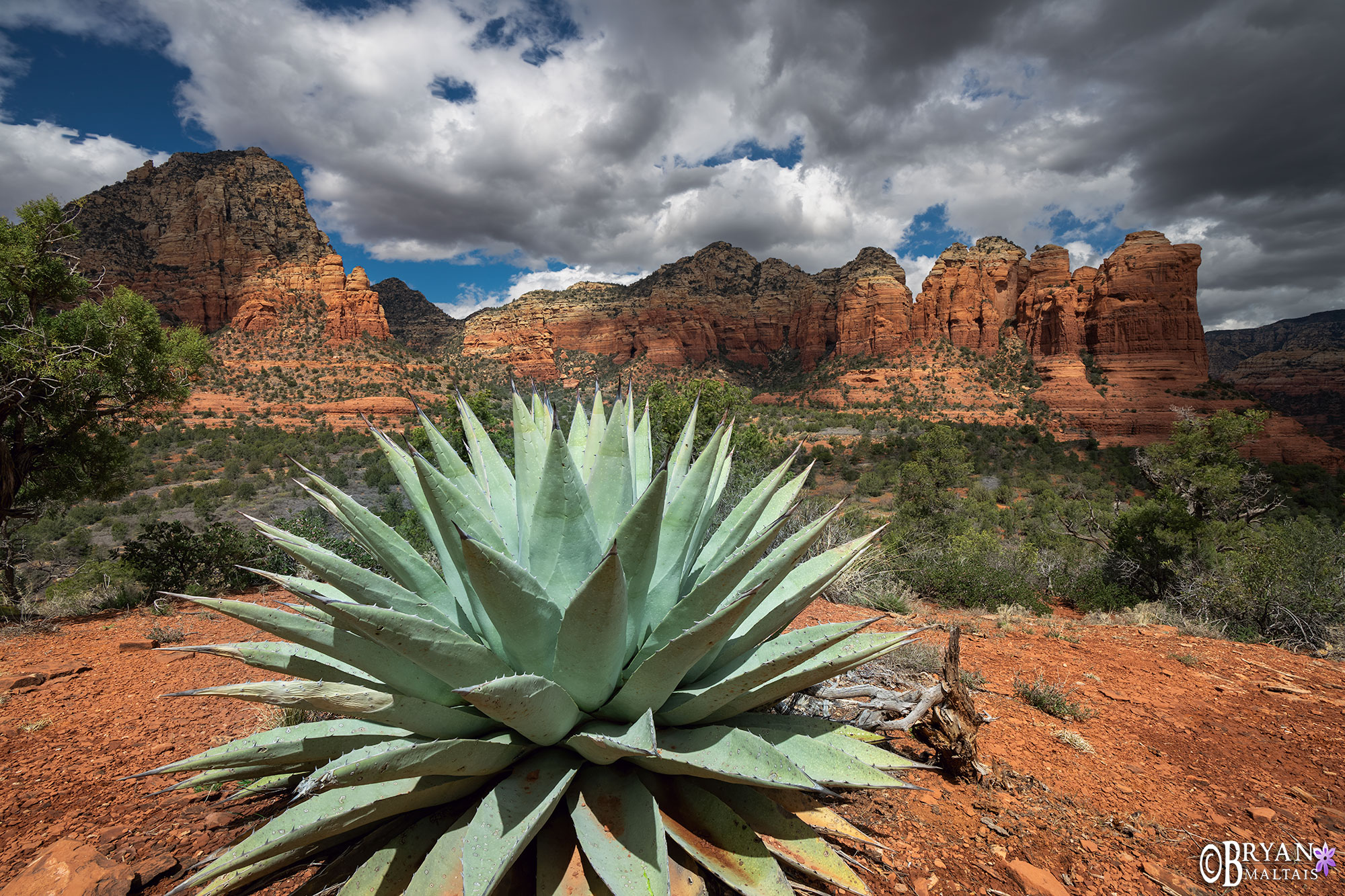 Mid-day light occurs between late morning and late afternoon when the sun is overhead. Its tone is white because it shines directly down through a short distance of the atmosphere that doesn’t filter out the blue wavelengths. Without warmth, the white light can make even colorful landscapes look bleached-out. The sun’s high position also creates dark shadows with hard edges that point downwards. This can cause too much shadow and obscure details. It’s like when a person is wearing a ball cap at noon with their face hidden in a black shadow while the rest of them is bright.
Mid-day light occurs between late morning and late afternoon when the sun is overhead. Its tone is white because it shines directly down through a short distance of the atmosphere that doesn’t filter out the blue wavelengths. Without warmth, the white light can make even colorful landscapes look bleached-out. The sun’s high position also creates dark shadows with hard edges that point downwards. This can cause too much shadow and obscure details. It’s like when a person is wearing a ball cap at noon with their face hidden in a black shadow while the rest of them is bright.
Even photos of gorgeous landscapes can turn out ugly if taken under mid-day light. Of course, beautiful photos can be captured at any time of day if dramatic clouds are present.
Diffused Light
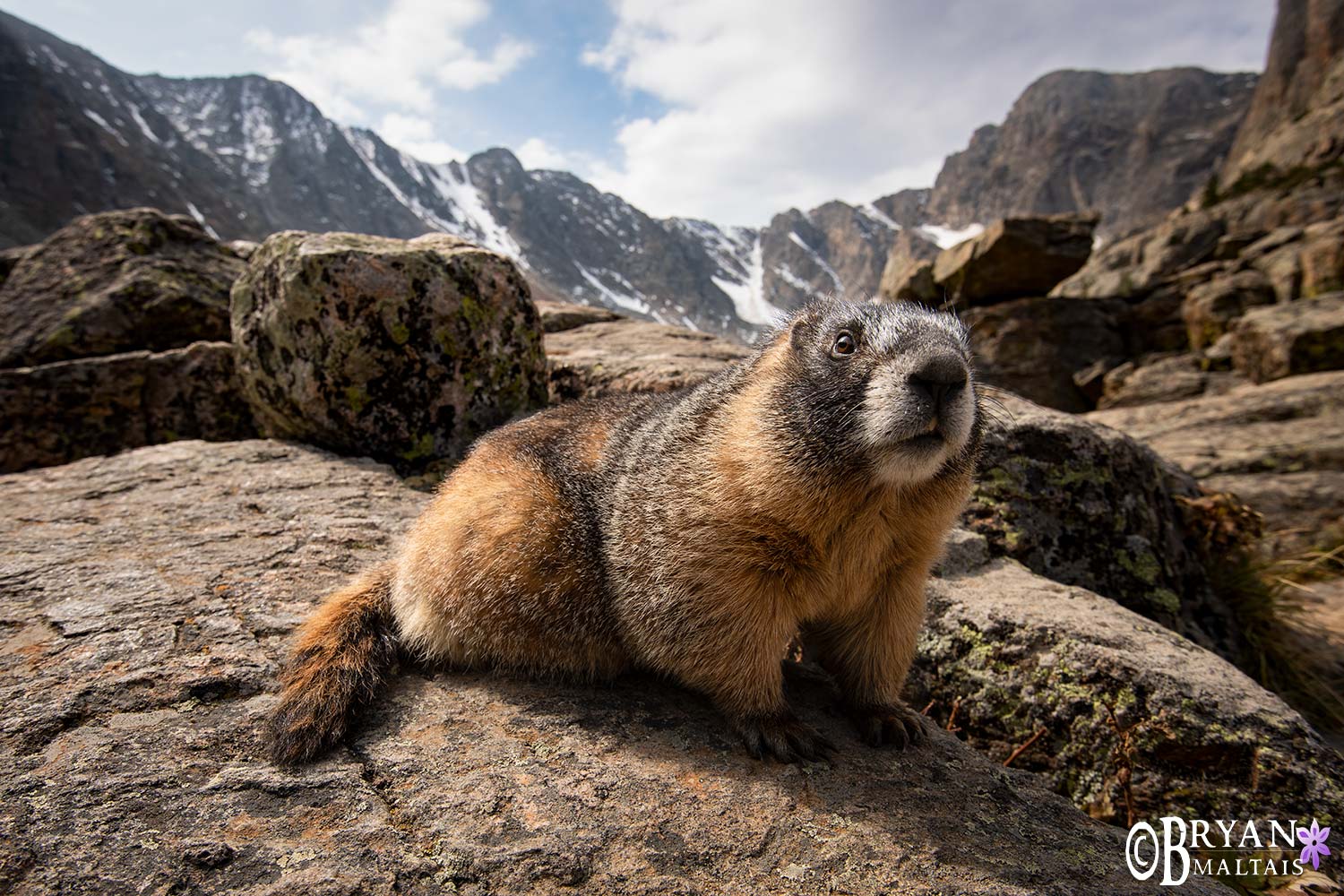 Diffused light occurs anytime light passes through a translucent medium, resulting in soft, even illumination. An overcast sky is the best example of diffused light when sunlight filters through the clouds. Other examples include sunlight filtering through a forest canopy and flash firing through a soft box.
Diffused light occurs anytime light passes through a translucent medium, resulting in soft, even illumination. An overcast sky is the best example of diffused light when sunlight filters through the clouds. Other examples include sunlight filtering through a forest canopy and flash firing through a soft box.
Diffused light can be useful in photography because it eliminates shadows and produces accurate color tones. Unlike the warm tones of golden hour, diffused light allows the true colors of subjects to shine through. It also eliminates shadows, creating even illumination across all parts of the image that shows the detail and texture of the subject’s surface.
These qualities make diffused light excellent for macro and wildlife photography because it shows the intricate details on the subject’s skin, fur or exoskeleton that would otherwise be obscured by shadows.
Diffused light can also be useful for intimate landscapes where strong contrast from large shadows can overpower the image of a small space.
However, for the grand landscape, the diffused light of an overcast sky risks creating a flat scene with no relief.
Diffused light worked for this composition of Horsetooth Reservoir in Ft. Collins because there were other strong elements to add drama like leading lines, a reflection and distinguished clouds.
Front, Side and Back Light
These angles of light occur during the day’s shoulders when the sun begins to sink lower.
Front light is when the sun or light source is in front of the subject and behind your back. An example is when photographing a scene at sunset with the sun behind you. It’s the best type of light to bathe the subject with even illumination, showing maximum detail and warmth.
Side light can be useful because it creates shadows that show dimension. However, if the sun is farther to the side than you’d like, it can create too much shadow. Side light can also catch haze, which can be ugly, or good for creating layers in the atmosphere.
Side light cast shadows in the creases in these rainbow hills. Back or front light would have removed the shadows, creating a single mass with no relief or depth. Paria Canyon, UT
Back light is when the sun is behind the subject and shining into your face. This can cause the landscape to be in black shadow. It can also intensify haze in the photo because the light filters through any particles between the sun and camera. It can be useful if the sun is low enough to shine through colorful objects like flowers. It can also shine on the fringes of an animal’s fur or a woman’s long hair to create a beautiful halo effect. Back light is also useful for making silhouettes, filtering the sun through leaves, and making starbursts.
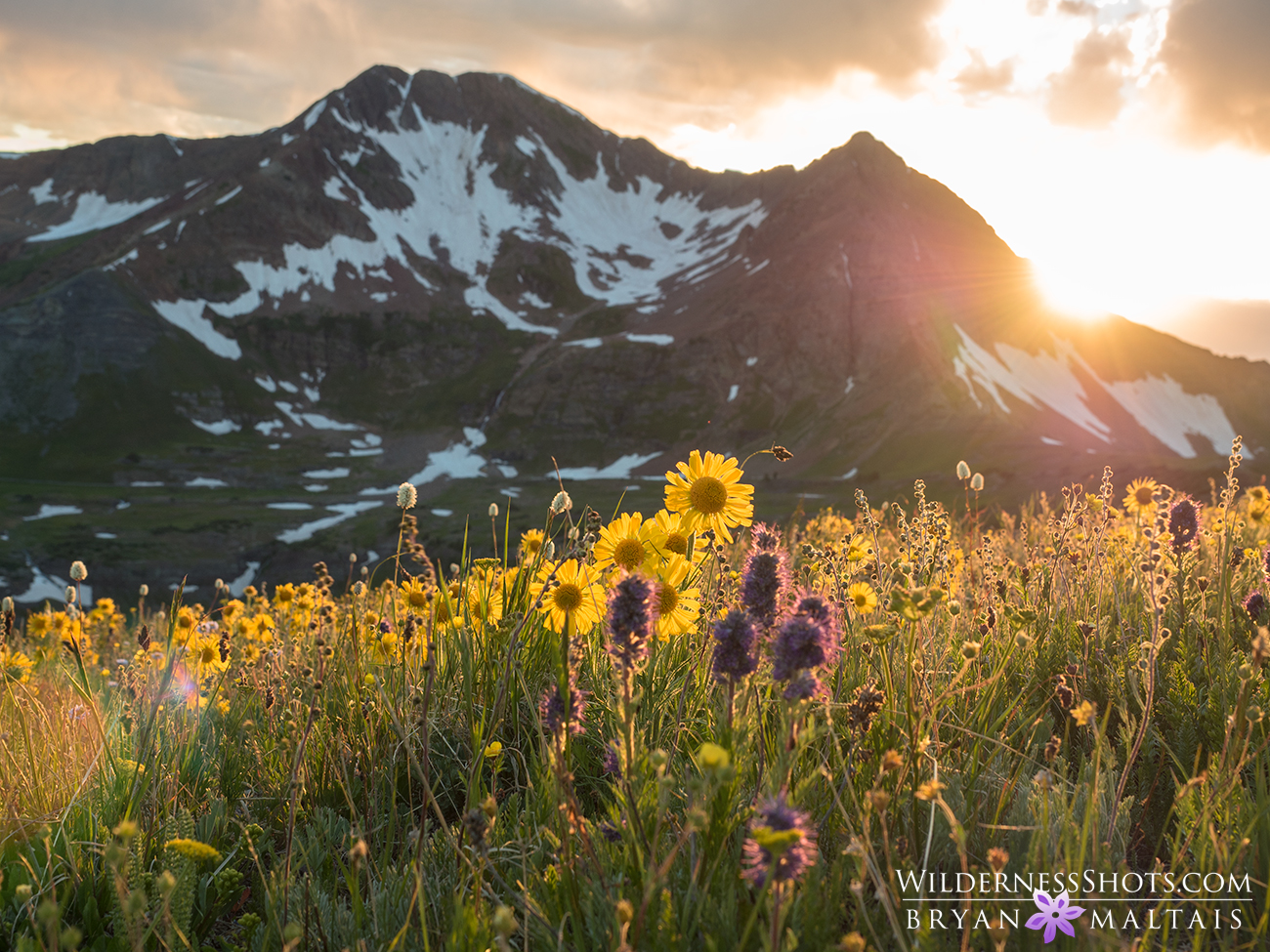 When the sun is low, its warm backlighting can filter through flower petals for a colorful play of light. Crested Butte, CO
When the sun is low, its warm backlighting can filter through flower petals for a colorful play of light. Crested Butte, CO

